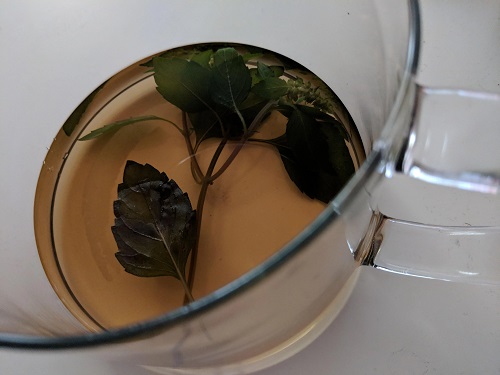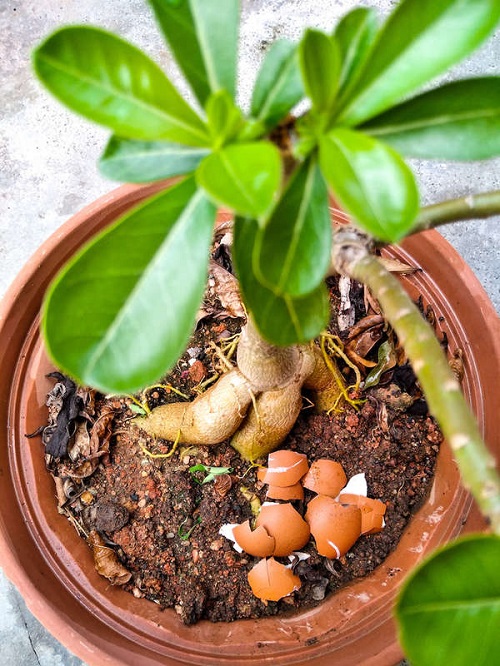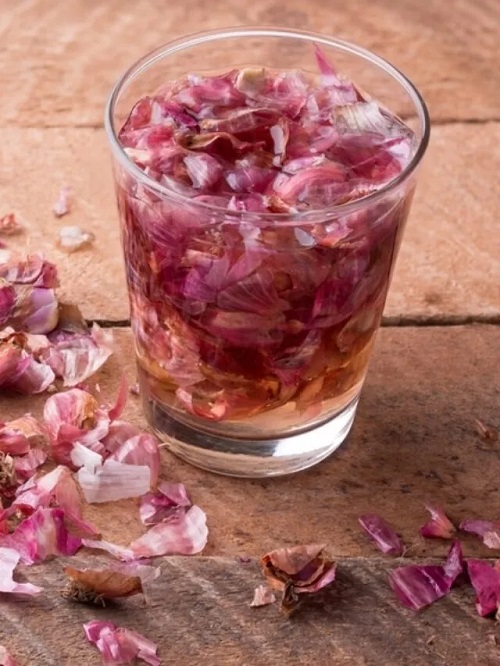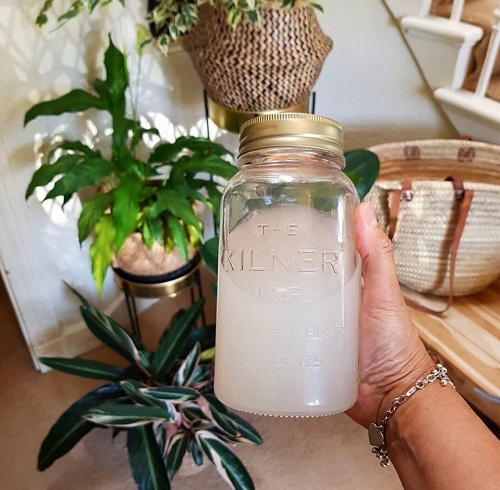Give your houseplant garden an organic boost with these indoor plant fertilizer recipes that won’t cost you any extra penny!
Plant health does not have to be expensive. In fact, that can come right from your kitchen, that too, without putting in any extra effort!
Best Indoor Plant Fertilizer Recipes From Kitchen
1. Banana Peel Water

Instead of tossing those banana peels into the bin, chop them up and soak them in a jar of water for a few days. The water becomes rich in potassium—an excellent feed for foliar specimens like pothos, spider plants, or philodendrons.
Alternatively, dry the peels, grind them, and sprinkle directly into the soil.
For the liquid fertilizer, you can give your plants a drink every 10 to 14 days during the sunnier months. But take it easy with the powdered version—once a month is plenty.
2. Used Coffee Grounds

Contrary to the common belief, used coffee grounds have close to neutral pH. However, you can dry them out and sprinkle them over the soil to improve its texture and nitrogen content, which benefits plants like African violets, Jade, and Ferns.
Or, you can steep them in water to create potassium, and magnesium-rich coffee grounds tea. This even works well for outdoor flowering plants, roses, and hydrangeas.
3. Tomato Puree
This pantry staple, loaded with phosphorus and potassium, is a boon for root strength and flowering. However, remember, it’s pretty acidic. So, dilute it (one part puree to ten parts water) and use bi-weekly during the blooming period for the best impact.
4. Green Tea

Used green tea bags or leaves are not just for composting; they can also nourish your plants. Brew a weak tea or simply sprinkle the damp leaves around the base of your plants. It’s particularly good for plants that prefer slightly acidic soil.
5. Egg Shells

Hang onto your eggshells after breakfast. Dried and powdered, they’re a calcium-rich treat for plants, particularly large-leaf varieties like rubber plants. They’re also fantastic for growing robust tomatoes and chilies.
Mix in a tablespoon for houseplants or a half-cup for vegetables every 4-6 weeks during warmer months. Remember to aerate the medium and water well to ensure even distribution to the roots.
6. Rice and Pulses Water
The water used for rinsing rice and pulses contains trace minerals and vitamins. This starchy water is beneficial for plant growth due to the carbohydrates that can act as an energy source for soil microorganisms.
It’s a mild nutrient source, suitable for use whenever you water your plants.
7. Onion Peel Water

Did you know those onion peels you usually toss can give your flowering plants a boost? They are packed with potassium, calcium, and iron. To prepare the fertilizer, soak a handful of onion peels in a liter of water for about a week. Strain and dilute the dark, pinkish liquid with ten parts water before using.
More than houseplants, it’s ideal for fruiting and flowering plants every 10-12 days once the buds have appeared. However, the smelly liquid might attract flies, so it’s more suited for outdoor plants.
8. Starch Water

The next time you boil potatoes or pasta, save the water. Cool it, dilute it with equal parts water, and use it every 7-10 days. Rich in essential nutrients, it supports healthy root development and improves soil health.
9. Boiled Vegetable Water
The nutrient-laden water from boiled veggies is too good to waste. Let it cool and use it instead of regular watering to give your plants a mix of potassium, magnesium, and nitrogen.






